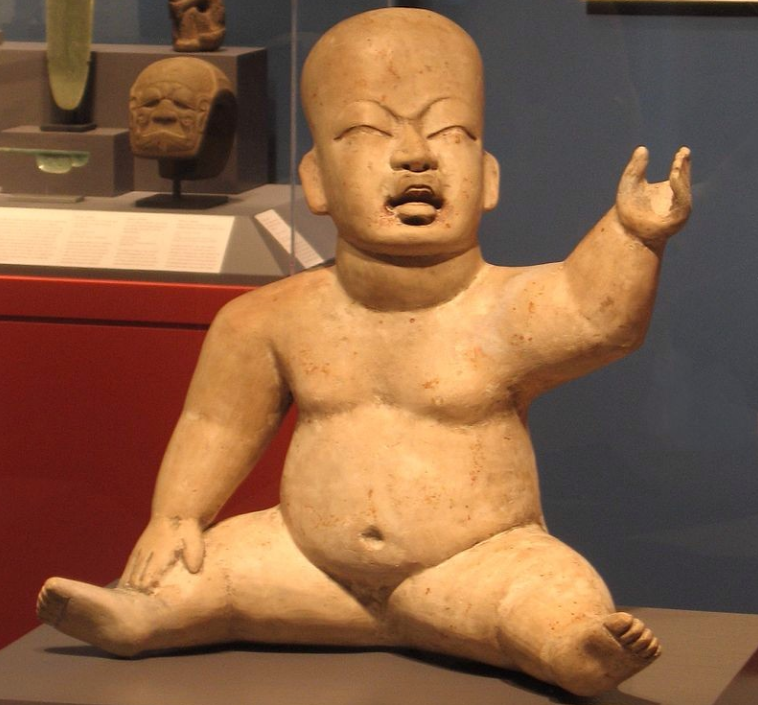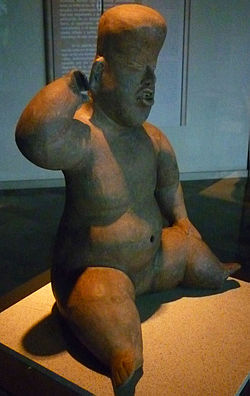The Olmec civilization, thriving between 1500 BCE and 400 BCE, is considered the first major culture of Mesoamerica. Located in the tropical lowlands of modern-day Veracruz and Tabasco, Mexico, the Olmec laid the cultural, architectural, and religious foundations that would influence subsequent Mesoamerican societies such as the Maya and Aztec. Their contributions, ranging from monumental art to ritual practices, mark them as pioneers in the history of the Americas.
Origins and Geographic Context
The Olmec emerged in the fertile lowlands of south-central Mexico, an area rich in rivers and resources. Pre-Olmec communities had inhabited this region since 2500 BCE, but by 1600–1500 BCE, Olmec culture crystallized, with San Lorenzo Tenochtitlán becoming the earliest significant urban center. Its strategic location allowed the Olmec to engage in agriculture, trade, and monumental construction, enabling their society to flourish.

Cultural Achievements of the Olmec
1. Monumental Architecture and Sculpture
The Olmec are best known for their colossal stone heads, some reaching over 3 meters in height and weighing several tons. These heads, likely representing rulers or deities, were carved from basalt and transported over long distances, showcasing advanced engineering and organization.
Their cities, such as San Lorenzo and La Venta, featured complex ceremonial platforms, pyramids, and drainage systems, highlighting their architectural ingenuity.
2. Religious Practices
Rituals were central to Olmec life, with bloodletting ceremonies believed to be vital for maintaining cosmic order. The Olmec were also the first to formalize the Mesoamerican ballgame, a ritualistic sport that symbolized cosmic battles and was adopted by later cultures.
3. Artistic and Symbolic Innovations
Olmec art is characterized by its intricate carvings, including jade figurines and altars adorned with symbolic motifs like jaguars and serpents. These motifs reflected their cosmology, with jaguars often symbolizing a connection between humans and the divine. Early hieroglyphic writing and calendar systems attributed to the Olmec laid the groundwork for the sophisticated systems of later Mesoamerican civilizations.
Centers of Olmec Civilization
San Lorenzo Tenochtitlán (1200–900 BCE): The earliest Olmec city, known for its colossal heads, sophisticated drainage systems, and ceremonial platforms.

La Venta (900–400 BCE): A religious center marked by a massive earthen pyramid and elaborately carved altars, indicating the Olmec’s evolving architectural and ceremonial practices.
Decline and Legacy
By 400 BCE, the Olmec civilization had declined, possibly due to environmental changes, social upheaval, or shifting trade networks. Despite their disappearance, their influence endured:
The religious practices of ritual bloodletting and the ballgame became integral to later cultures.
Their artistic and architectural styles inspired the Maya, Aztec, and other Mesoamerican civilizations.
The Olmec’s role as the “mother culture” of Mesoamerica underscores their importance in shaping the region’s cultural and historical trajectory.
Analysis: Why the Olmec Matter
The Olmec’s achievements demonstrate the sophistication of early complex societies. Their ability to create monumental art and architecture without the wheel or metal tools speaks to their ingenuity. The integration of religion, art, and politics into their daily life provided a template for subsequent civilizations to build upon.
Conclusion
The Olmec civilization, though long gone, remains a cornerstone of Mesoamerican history. Their innovations in art, architecture, and religious practices have left an indelible mark, influencing the development of some of the most iconic cultures of the ancient Americas. As the pioneers of Mesoamerican civilization, the Olmec offer us a window into the origins of one of the world’s most fascinating cultural regions.

